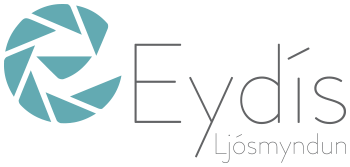Off 69 youngsters, 45 advertised playing with dating programs
Most college students (93.3%) said having fun with Tinder. Almost every other relationship software noted have been Bumble (20%), Count (4%), Java Match Bagel (2%), MeetMe (2%) and you can Grindr (2%).
In order to evaluate whether or not there were sex differences in who used dating apps (within the last 12 months), a Chi-square analysis was used. Out of 43 female participants, 20 stated that they used a dating app, while out of 26 males, 25 used a dating app, which indicated a significant difference in the frequency of the responses, 2 (1, N=69) =, p<0.001. According to these counts (Figure 1), while there were more women who participated in the survey, a disproportionate number of men (96.2%) were using dating apps compared to women (46.5%). Interestingly, these results were different from those from Pew Research, which found that roughly equal proportion of men (32%) and women (28%) use dating apps (Anderson, Vogels Turner, 2020). However our data are consistent with demographics reported by Tinder, the most popular dating site (Clement, 2020), Bumble, a site catering to women (Alter, 2015), and Hinge, a site specializing in serious relationships, (Carman, 2019), which reports 72%, 54%, and 64% male users, respectively (Clement, 2020, McAlone, 2015, Vedantam, 2020). It is noted that the reported demographics of the Pew Research differ from those for the individual apps. A possible explanation for this disparity lies within the method of data collection. The data for the individual apps were collected via analytics, while the data in the Pew Research was collected via surveys. In addition, the Pew Research over sampled the lesbian, gay, and bi-sexual populations (Anderson, Vogels Turner, 2020). It is possible that men and women equally use dating apps in the lesbian, gay and bisexual communities, however, since the data regarding Tinder, Bumble, and Hinge did not analyze the demographic of sexual orientation, it is unclear whether sexual orientation factors in to dating app usage.
Shape 1: Proportion of matchmaking profiles once the a purpose of physiological intercourse. A beneficial disproportionate number of guys fool around with dating services compared to the females.
It’s noted that the investigation to possess portion of male tinder users was Plainly, there were a whole lot more men pages than just females pages stated getting Bumble, which is an online site which is targeted at women
As the amount of men and women relationship software profiles was indeed rough, then it is possible that there were gender differences in the determination (we.elizabeth. casual intercourse or otherwise not informal intercourse) for using brand new software. I evaluated if or not visitors indexed “casual sex” as a desire to use the newest application in different dimensions. Within decide to try, 55% of females detailed relaxed intercourse due to the fact motivation, when you are 80% of males did. An excellent Chi-rectangular research presented a non-high results, dos (step one https://datingranking.net/indian-chat-room/, N=45) =step three.24, p=0.072, which implies that folks enjoys proportional distributions due to their desire. Although not, it’s questioned you to enhancing the sample size manage result in a significant test while the gotten p-worthy of are addressing 0.05 (Shape dos).
Contour dos: Proportion of dating profiles searching for “informal intercourse” as the a purpose of physical intercourse. So much more boys versus people conveyed so it motivation for making use of on line relationships apps but is simply somewhat high (p=0.072).
There’s a chance that ladies might report lower pleasure critiques that may end in possibly ending the usage matchmaking applications
Our studies suggest that way more college or university-aged people disproportionately used dating programs as compared to women in the brand new last 12 months. Hence, i tested the possibility that there would be sex differences in pleasure for making use of relationship apps. Another-products t-attempt is used to see if there were differences between guys (M = 5.04, SD = 2.19, n = 25) and you will people (M = 5.50, SD = 2.89, n = 20) within fulfillment for making use of matchmaking applications. Results tell you no factor, t (43) = 0.547, n.s.
